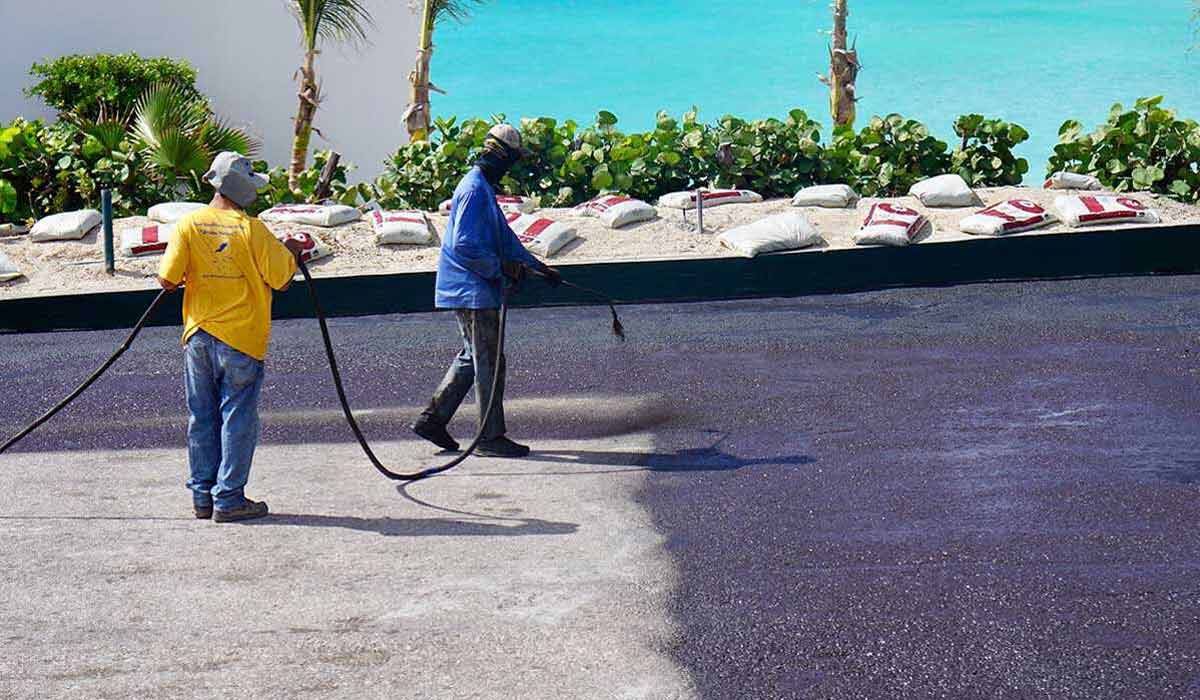Every successful business adds more tools to keep growing: online companies add software, factories add more sophisticated machines. Asphalt maintenance companies can do the same thing: by getting the right tools at the right time, you’ll be able to do more work for less labor cost, in a shorter time frame, and that’s how you will grow your business. Where to start?
Surface Preparation
Most people starting out in the asphalt maintenance business use push brooms and backpack blowers to clean the surface area of a job site. Those are great when used on residential areas, however, when your business starts to grow and you move on to larger projects such as commercial establishments, parking lots, golf courses, and airports, you would want machines and equipment that can help you get the job done faster and more efficiently.
Use gas-operated push and wheeled blowers such as the LandShark 7HP Walk Behind Leaf Blower or the Billy Goat 13HP Wheeled Blower. These machines are more powerful than backpack blowers and can move dirt and debris faster and better, especially on large surfaces.
For cleaning cracks, traditional push brooms are only as strong as the person using them. If you're looking for really strong sweepers and crack cleaners that get the job done more effectively, a gas-operated rotary broom or the 5 HP Billy Goat Grazor crack cleaning machine can clean cracks and curbs more thoroughly in half the time. These machines are great tools for sweeping out low spots with dirt and debris or around the edges of curbs close to grass.
Crack Sealing
For crack sealing jobs, most companies start with cold-pour liquid crack filler especially in residential areas. This type of product comes in 1-gallon bottles or 5-gallon pails that can be applied directly by hand straight from the bottle, or by using pour pots. Sealing cracks using this method is backbreaking, as you will have to get down on your hands and knees to get the job done. In addition, liquid crackfiller doesn’t last as long as rubberized commercial-grade crack sealer.
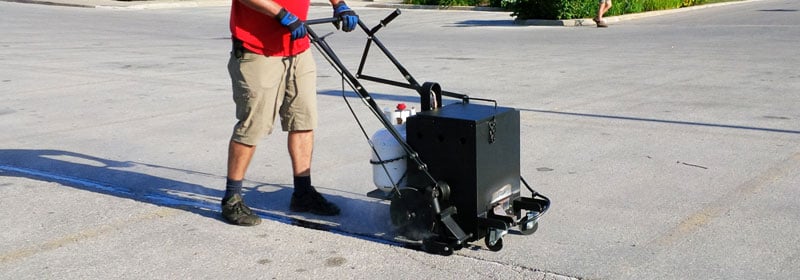
If you intend your business to grow and be recognized for professional-quality service, you will want to use hot-pour crack sealer applied using the RY10 Pro push melter applicator. The RY10 Pro melts and applies crackfill at walking speed, which is great for small to mid-sized commercial jobs. Using an asphalt crack filler machine helps you work faster, especially if you have multiple people working on sealing cracks, and allows you to cover more ground area.
If you want to become really efficient in crack sealing, we recommend that you also use the RY30MK dual-burner melter oven with its 30-gallon capacity. This machine can heat and melt down larger volumes of rubberized crackfill, so you will always have it ready for transfer and available for application using pour pots, crackfill banders or the RY10 Pros.
If we're going to use the coffee pot analogy, by using the RY30MK, you have a stationary brewing station that is always ready to dispense hot ready-to-drink coffee. The pour pots, cracks banders and RY10 Pros are your coffee cups.

To get the best deal for your business, we recommend getting the Asphalt Crack Filler Machine Combo, which is more cost-efficient than buying the RY10 Pro and RY30MK Pro individually.
Sealcoating
When starting out in the sealcoating business, most contractors use brushes or squeegees and apply sealer by hand. This proves to be time-consuming and uses up more sealer per square foot. Most of the time, sealer applied by brush or squeegee ends up in thick coats that don’t set and cure fast enough while having a bumpy and uneven finish.
If you want to scale your business and create a more professional finished product, we recommend that you use a proper spray system. Bonus: you’ll actually use less sealer than if you sealcoat by hand!

Entry level sprayer systems are a great way to start. We have the AK55 Sealer Sprayer for Drums and the AK275 Tote Sealcoating Spray System, which are more cost-effective solutions compared to brushes, brooms and squeegees. If you have the finances and budget to scale further into a more Pro level, go with either the AK130 Pro or the AK230 Pro. These units are designed to hold larger volumes of sealer than the drum sprayer system and can handle jobs that are larger than driveways.
For larger-scale commercial work and if you have multiple people in your crew, take it a step further and choose the AK300 Duramax Sealcoat Sprayer. This 300-gallon air-operated sprayer system is designed to be compatible with acrylic or asphalt emulsion sealers, so you can have more flexibility with the projects you book.
If you want to go all-in, go with our industrial grade ProMax Sprayer Systems. With tank capacities ranging from 550 to 1000 gallons, these hydraulic agitated spray units can spray heavy sand loads easily, making these machines the ultimate when it comes to professional sealcoating systems.
Line Striping
When it comes to line striping, the starter pack consists of 4-inch paint rollers, buckets or trays, and masking tape. Contractors mark starting and base lines with tape, which is time-consuming – and you will have to spend money for tape that you cannot reuse after peeling off. Others use the chalk and string method. Although not as expensive as the tape technique, this too, can take a lot of time and needs to be repeated for each section that you work on. Remember, time lost is profit lost.
For paint application, rollers are cheap, however, they can be very messy to work with. In addition, since you are using buckets or trays for the paint, you could end up with unexpected drips and spills from moving them around the job site, making your work appear far from being professionally done.
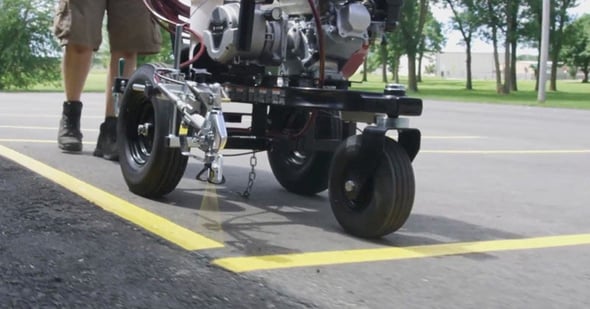
To ensure that you get the appropriate return of investment, we recommend using proper line stripers instead. The entry-level gas-powered PowrLiner 850 is a highly recommended striping machine since it works like a charm on parking lots that have 100 stalls or less. However, since this striper has a small engine, it can heat up the pump if you run it continuously for more than 100 lines. An overheated pump can cause the machine to malfunction, and you wouldn't want that happening in the middle of a job.
For larger areas, you want a machine that can run longer without strain. We recommend the larger single-gun PowrLiner PL3500, the 2-gun PowrLiner 2850, or the Graco LineLazer V 3900. These machines have more powerful engines designed for mid-range stripers. The units with 2-gun mounts are ideal if you need to paint parallel lines in one shot.
Download for free
- Printable price estimate chart
- Typical estimate for 50-stall parking lot
- Links to free online resources for you to learn line striping at your own pace
From there, you have a wide range of bigger line striping units to fit any job requirement. You can go with the PowrLiner 4955 for continuous striping over large parking lots and fields due to its large 12-gallon paint hopper and 50-foot hose.
Another option is the Graco LineLazer V 3900 AutoLayout. With its highly advanced features, you won't need to get down on your hands and knees just to mark your starting and base lines. This machine allows you to put pre-marks on the pavement while you walk. Its digital panel allows you to measure stall sizes and angles so you will know how much paint you’ll need per project, while allowing you to either use the push-button automatic gun control or the traditional manual levers to operate the dual spray guns.
You can also convert this walk-behind line striper into a ride-on unit by connecting it to the Titan LazyLiner Elite using the Graco LineLazer Hitch. As a converted ride-on striper, the Graco LineLazer V 3900 AutoLayout is ideal for larger areas, such as athletic fields, mall parking lots, and airport runways.
By using machines and equipment best suited to the job you are working on, you will not only save time and increase your profit margin, you will also appear more professional and organized.
Need an asphalt maintenance business refresher? Then check out the Asphalt Kingdom Build Your Own Business Blueprint to get back to the basics.

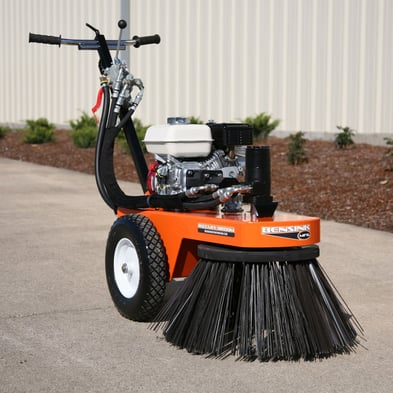

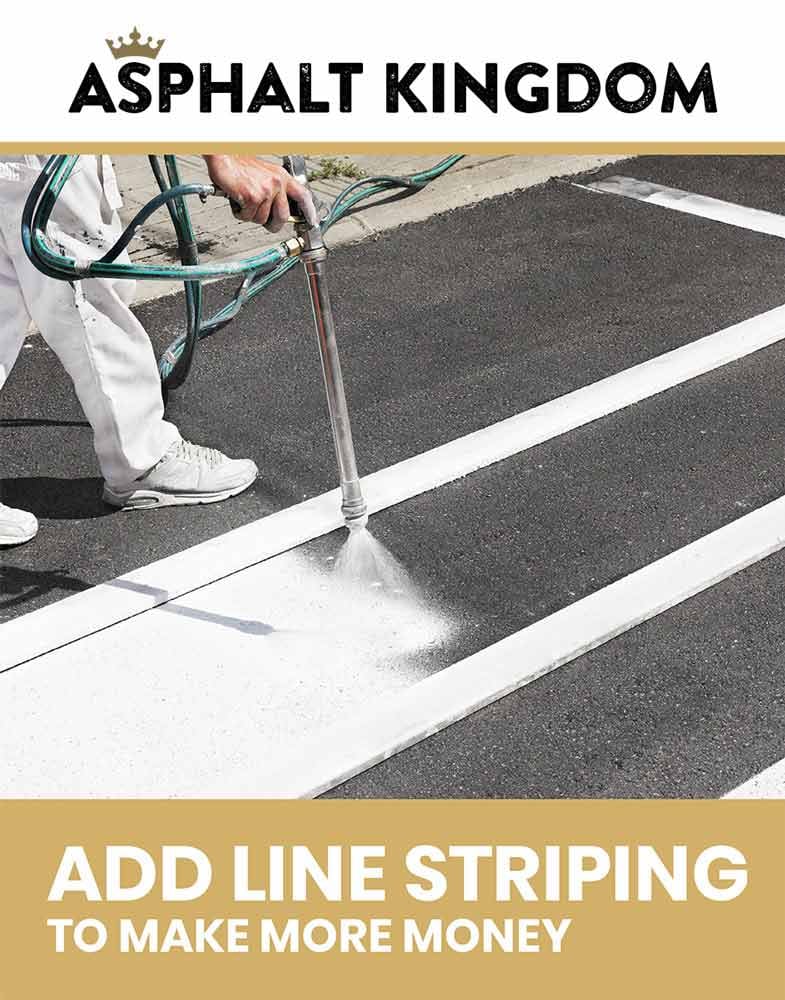

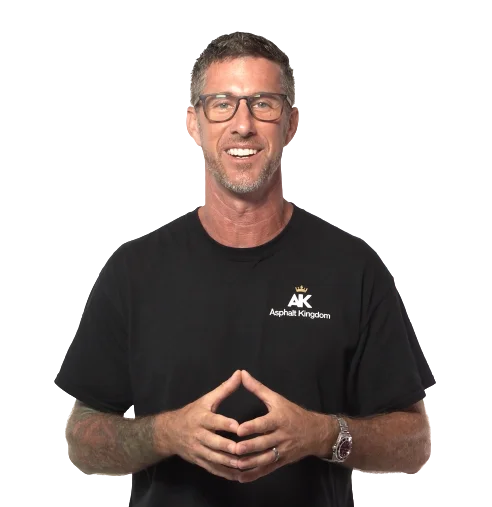

-2.jpg)
.jpg)
